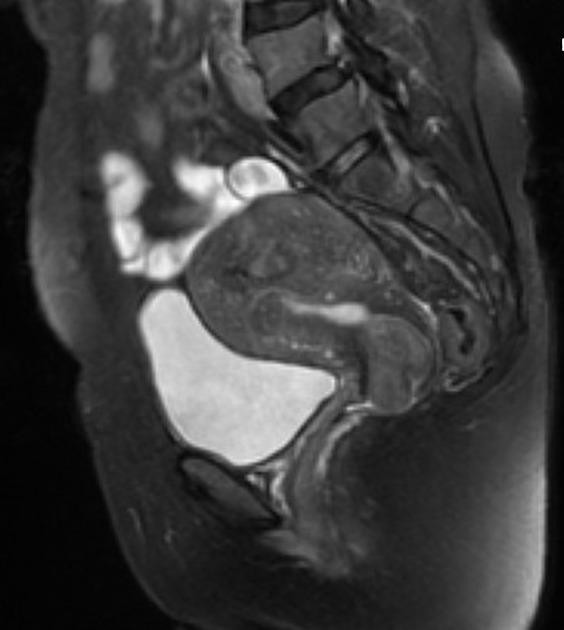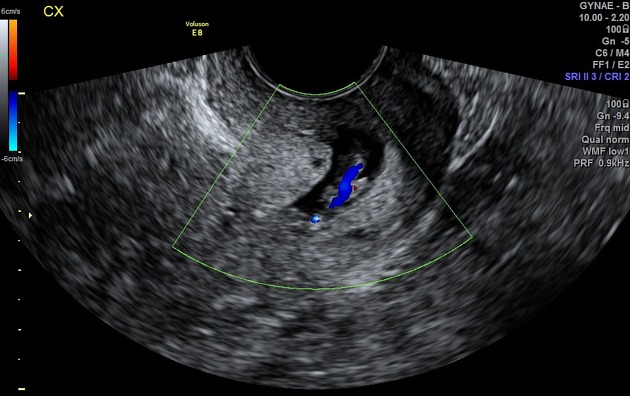Cervical polyp
Citation, DOI, disclosures and article data
At the time the article was created The Radswiki had no recorded disclosures.
View The Radswiki's current disclosuresAt the time the article was last revised Kehinde Lawal had no financial relationships to ineligible companies to disclose.
View Kehinde Lawal's current disclosures- Endocervical polyp
- Endocervical polyps
- Polyp within uterine cervix
- Polyps within uterine cervix
- Cervical polyps
Cervical polyps are polypoid growths projecting into the cervical canal. They can be one of the most common causes of intermenstrual vaginal bleeding.
On this page:
Epidemiology
Most patients are perimenopausal at the time of presentation, especially in the 5th decade of life. They are the most common mass lesion of the cervix, with a reported prevalence of 1.5-10%
Clinical presentation
More than half of cases are asymptomatic. Symptoms can include menorrhagia, postmenopausal bleeding, contact bleeding, and vaginal discharge. The diagnosis is made primarily with hysteroscopy.
Pathology
Histologically, cervical polypoid lesions encompass a spectrum of pathologic entities which include endocervical or endometrial tissue with metaplasia.
The polyps are usually pedunculated, often with a slender pedicle of varying length, but some can be sessile.
Associations
Approximately 25% of patients may also have a co-existing endometrial polyp 2.
ADVERTISEMENT: Supporters see fewer/no ads
Radiographic features
Ultrasound
sessile or pedunculated well-circumscribed masses within the endocervical canal
may be hypoechoic or echogenic
identifying the stalk attaching to the cervical wall helps differentiate it from an endometrial polyp
Complications
Can progress into carcinoma of the cervix in ~0.1% of cases.
Treatment and prognosis
Surgical removal is often the treatment of choice although some suggest initial monitoring for small polyps 7. Recurrence is rare.
Differential diagnosis
For a polypoid lesion within the cervical canal consider:
pedunculated uterine leiomyoma protruding through the cervical canal
endometrial polyp protruding through the cervical canal
See also
References
- 1. Okamoto Y, Tanaka YO, Nishida M et-al. MR imaging of the uterine cervix: imaging-pathologic correlation. Radiographics. 23 (2): 425-45. doi:10.1148/rg.232025065 - Pubmed citation
- 2. Stamatellos I, Stamatopoulos P, Bontis J. The role of hysteroscopy in the current management of the cervical polyps. Arch. Gynecol. Obstet. 2007;276 (4): 299-303. Arch. Gynecol. Obstet. (full text) - doi:10.1007/s00404-007-0417-2 - Pubmed citation
- 3. Robertson M, Scott P, Ellwood DA et-al. Endocervical polyp in pregnancy: gray scale and color Doppler images and essential considerations in pregnancy. Ultrasound Obstet Gynecol. 2005;26 (5): 583-4. Ultrasound Obstet Gynecol (full text) - doi:10.1002/uog.1992 - Pubmed citation
- 4. Spiewankiewicz B, StelmachóW J, Sawicki W et-al. Hysteroscopy in cases of cervical polyps. Eur. J. Gynaecol. Oncol. 2003;24 (1): 67-9. Pubmed citation
- 5. Chu LC, Coquia SF, Hamper UM. Ultrasonography evaluation of pelvic masses. Radiol. Clin. North Am. 2014;52 (6): 1237-52. doi:10.1016/j.rcl.2014.07.003 - Pubmed citation
- 6. Radiology of the Female Pelvic Organs (Medical Radiology). Springer. ISBN:3642643248. Read it at Google Books - Find it at Amazon
- 7. Tanos V, Berry KE, Seikkula J, Abi Raad E, Stavroulis A, Sleiman Z, Campo R, Gordts S. The management of polyps in female reproductive organs. (2017) International journal of surgery (London, England). 43: 7-16. doi:10.1016/j.ijsu.2017.05.012 - Pubmed
- 8. Yara G. Alkilani, Irasema Apodaca-Ramos. Cervical Polyps. (2020) Pubmed
Incoming Links
Related articles: Pathology: Genitourinary
- obstetrics
-
first trimester
- ultrasound findings in early pregnancy
- embryo/fetus
- beta-hCG levels
- confirming intrauterine gestation
- pregnancy of unknown location (PUL)
- first trimester vaginal bleeding
- early structural scan
- aneuploidy testing
-
second trimester
- fetal biometry
- amniotic fluid volume
- fetal morphology assessment
- soft markers
- amnioreduction
- Doppler ultrasound
- nuchal translucency
- 11-13 weeks antenatal scan
- chorionic villus sampling (CVS) and amniocentesis
- other
- placenta
- placental anatomy
- placental developmental abnormalities
- placenta previa
- spectrum of abnormal placental villous adherence
- abnormalities of cord insertion
- abruptio placentae
- placental pathology
- vascular pathologies of placenta
- placental infections
- placental masses
- molar pregnancy
- twin placenta
- miscellaneous
-
first trimester
- gynecology
- acute pelvic pain
- chronic pelvic pain
- uterus
- ovaries
- ovarian follicle
- ovarian torsion
- pelvic inflammatory disease
- ovarian cysts and masses
- paraovarian cyst
- polycystic ovaries
- ovarian hyperstimulation syndrome
- post-hysterectomy ovary
- cervix
- fallopian tube
- other
- male genital tract
- prostate gland
- transrectal ultrasound
- prostate tumors
- infections of the prostate
-
prostatitis
- acute bacterial prostatitis
-
chronic prostatitis
- chronic bacterial prostatitis
- chronic prostatitis and chronic pelvic pain syndrome (CPPS)
- asymptomatic inflammatory prostatitis
- granulomatous prostatitis
- emphysematous prostatitis
- prostatic abscess
-
prostatitis
- benign prostatic hypertrophy
- cystic lesions of the prostate
- prostatic calcification
- prostatic infarction
- testes
-
unilateral testicular lesion
- testicular torsion
- orchitis
- testicular trauma
-
germ cell tumors of the testis
- testicular seminoma
-
non seminomatous germ cell tumors
- mixed germ cell tumor
- yolk sac tumor (endodermal sinus tumor)
- embryonal cell carcinoma
- choriocarcinoma
- testicular teratoma
- testicular epidermoid (teratoma with ectodermal elements only)
- burned out testis tumor
- sex cord / stromal tumors of the testis
- testicular cyst
- testicular lymphoma
- bilateral testicular lesion
- paratesticular lesions
- epididymis
- other
- polyorchidism
- cryptorchidism
- tubular ectasia of the rete testis
- cystadenoma of the rete testis
- testicular sarcoidosis
- testicular tuberculosis
- spermatic cord
- fibrous pseudotumor of the scrotum
- scrotal leiomyosarcoma
- testicular adrenal rest tumors (TARTs)
- tunica vaginalis testis mesothelioma
- splenogonadal fusion
- testicular vasculitis
- abnormal testicular Doppler flow (differential)
-
unilateral testicular lesion
- penis
- prostate gland
- KUB
- kidneys
- normal renal anatomy
- hydronephrosis
- urolithiasis
- renal masses
- renal cystic disease
- renal infection
- vascular
- trauma
- ureter
- normal ureter anatomy
- ureteral stricture
- ureteral dilatation
- ureteral anomalies
- ureteral tumors
- ureteral trauma
- other
- bladder
- kidneys







 Unable to process the form. Check for errors and try again.
Unable to process the form. Check for errors and try again.